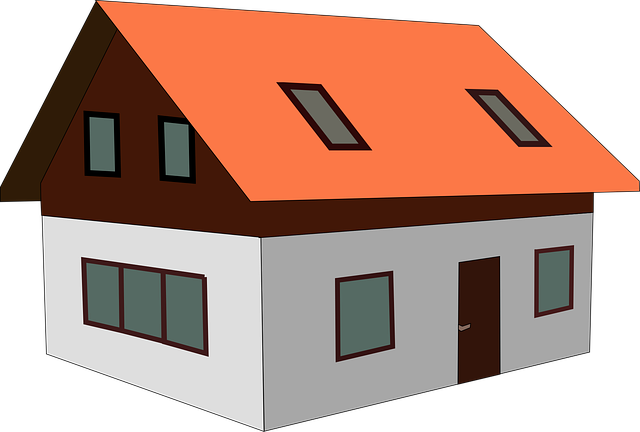Selling a house with mold presents unique challenges due to its impact on property value and buyer deterrence. Extensive mold growth requires meticulous remediation, involving inspections, sampling, targeted techniques, and proper disposal. Transparency about previous issues and documentation of remediation is crucial for market value and buyer trust. Proactive steps like detailed disclosure, air purification, and regular maintenance can increase the resale value of a previously mold-affected property.
Understanding mold and its impact on properties is crucial for homeowners and real estate investors alike. This article delves into the intricate relationship between past mold remediation efforts and property value, exploring both the positive and negative effects. We’ll break down the process of effective mold remediation, examine how previous mold issues can influence resale value, and offer valuable tips for selling a house with a history of mold. By the end, you’ll be equipped to navigate this complex aspect of real estate transactions.
- Understanding Mold and Its Impact on Properties
- The Process of Mold Remediation: Effectiveness and Techniques
- How Past Mold Issues Can Affect Property Value
- Factors Influencing the Resale Value After Remediation
- Tips for Selling a House with a History of Mold
Understanding Mold and Its Impact on Properties

Mold, a natural but potentially harmful organism, can thrive in moist environments, often hidden behind walls or under flooring. When left undetected and untreated, it may cause significant damage to a property’s structure and aesthetics. Selling a house with mold presents unique challenges for both sellers and buyers. The presence of mold can significantly impact the property’s value, as it raises concerns about air quality and potential health risks.
While some mold is common in homes, extensive or visible mold growth signals a problem that needs addressing. This issue is particularly relevant when preparing a house for sale, as prospective buyers often demand high standards and may be deterred by signs of water damage or musty odors indicative of mold remediation efforts in the past. Understanding the extent of previous mold problems and proper documentation of subsequent remediation are crucial steps to ensure transparency and maintain market value during the selling process.
The Process of Mold Remediation: Effectiveness and Techniques

Mold remediation is a meticulous process aimed at eliminating mold growth and restoring affected areas to a safe, healthy state. When addressing mold in a property, especially when selling a house with mold, understanding the effectiveness and techniques employed is key. The initial step involves identifying the extent of the mold problem through thorough inspections and sampling. Once located, the remediation process can vary based on the type and severity of mold contamination.
Common techniques include removing and replacing damaged materials, containing the spread of mold, and using specialized cleaning agents to kill existing mold spores. After decontamination, air filtration systems may be used to ensure the removal of airborne molds. Proper disposal of contaminated materials is also crucial to prevent reintroducing mold into the clean areas. Effective remediation not only restores the property to a safe condition but also increases its value by mitigating potential health risks and addressing a common concern among prospective homebuyers—selling a house with mold.
How Past Mold Issues Can Affect Property Value

Past mold issues in a property can significantly impact its current and future value, making it crucial for potential sellers to address these problems transparently. When a home has had previous mold remediation, buyers may perceive it as a red flag, especially if the issue wasn’t handled properly or if there are signs of recurring moisture problems. This skepticism can lead to reduced offers or even a longer time on the market.
Selling a house with mold requires honest disclosure and proper documentation. Real estate agents should guide sellers in revealing past remediation efforts, including the type of mold found and the extent of the work done. Well-documented records of remediation, such as professional assessments, repair invoices, and post-remediation inspections, can help reassure prospective buyers that the property is now safe and free from mold concerns, thus increasing its marketability and potential sale price.
Factors Influencing the Resale Value After Remediation

After successful mold remediation, several factors come into play when determining the resale value of a property affected by mold previously. One of the key considerations is the extent of the initial mold growth and the effectiveness of the cleanup process. Extensive or hidden mold issues may leave potential buyers hesitant to purchase, impacting the asking price. A thorough remediation that leaves no trace of mold can significantly enhance the property’s appeal.
The timeline between remediation and putting the house on the market matters too. The longer a property sits unoccupied after remediation, the more buyer concerns may arise. Regularly updating the market with fresh listings demonstrates that the home is ready for sale, addressing any potential fears about residual mold issues. Additionally, ensuring the remediation process adheres to industry standards and obtaining certificates of completion can build trust in prospective buyers, thereby influencing their willingness to pay a premium for a previously mold-affected property.
Tips for Selling a House with a History of Mold

When putting a property on the market, especially one with a history of mold, it’s crucial to be proactive and transparent. Begin by thoroughly documenting any previous remediation efforts, including photos and reports from reputable mold inspection companies. This shows potential buyers that you’ve taken the necessary steps to address the issue and can help build trust.
Next, focus on thorough cleaning and air purification. Ensure every visible sign of mold is eliminated and implement a robust system for maintaining indoor air quality. Regularly changing air filters in heating and cooling systems, increasing ventilation, and using dehumidifiers can significantly reduce moisture levels, making your home more appealing to buyers concerned about selling a house with mold.














